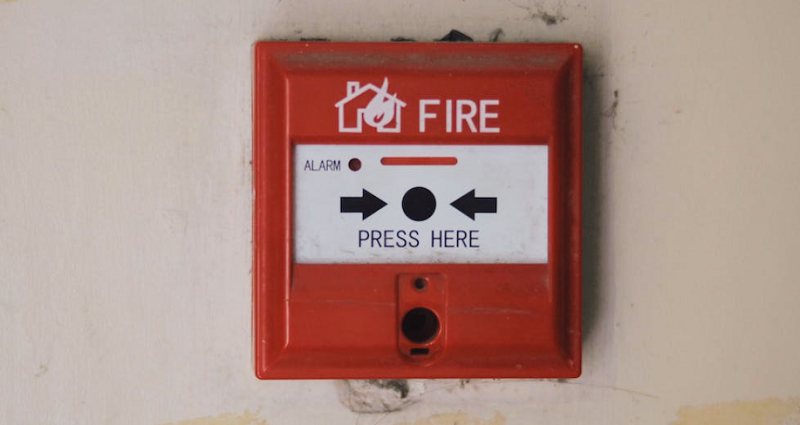Accidents can happen at any time. Sometimes, they are inevitable. But often, there are steps you can take to reduce the risk of injuries.
If you’re a business owner, here are twelve ways you can help to prevent workplace accidents.
1. Risk assessment
Regular risk assessment helps to identify potential hazards and find solutions.
Utilizing the latest health and safety guidelines, carry out a thorough check of internal and external areas.
Look out for any damaged equipment or poorly maintained furniture.
Check flooring and the condition of staircases and corridors. Note any potential issues, such as a wobbly floorboard or a leaking tap.
Once you have recorded possible risks, take action.
Ensure that repairs are carried out swiftly to eliminate any accidents.
2. Training
Ensure that all members of staff have the relevant training to do their day-to-day job safely and effectively. Provide appropriate training and make sure certificates are up to date.
As an employer, it is your duty to ensure that the workplace is a safe environment. Examples of essential training may include lifting and handling for warehouse operatives, for example.
3. Organisation and storage
Mess is one of the most common causes of slips, trips, and falls.
Keep your office clutter-free and take extra care to avoid obstructions on staircases. Use innovative storage solutions to keep the space tidy.
An orderly workplace will not just reduce the risk of injuries. It will also promote efficiency and provide a more pleasant and accessible working environment for staff.
4. Policies and procedures
It’s essential to keep updated with health and safety policies and procedures. Although they may be a little tiresome, they are there to keep people safe.
Make sure that spillages are mopped up quickly and that a warning sign is visible.
Repair damaged carpets or broken steps. Grit external pathways if snow is forecast. Ensure that all employees are familiar with the procedures in place.
If somebody does have an accident, it must be recorded. Look out for trends and try to find ways of preventing similar incidents in the future.
Image source: https://pixabay.com/en/posted-warning-wet-floor-caution-652115/
5. Equipment
Many people rely on equipment and machinery to do their job on a day-to-day basis. If you provide equipment, it is vital that your employees know how to use it properly. It is also of paramount importance to ensure that any protective equipment is in good working order.
Book regular testing sessions for electrical items. Encourage members of staff to report any issues they experience with tools or protective clothing. If there are problems, make people aware. Any damaged items should be removed from accessible lockers and clearly marked.
6. Communication
Creating a culture of open communication is essential for any workplace. Ensure that all workers feel comfortable raising any safety concerns they may have. Encourage staff to report any risks and hazards, no matter how small, as soon as possible.
Lead by example and ensure that your own behavior sets the standard for others in the office.
7. Regular Inspections
Regular inspections of the workplace are essential for proper safety management. These should be conducted on a weekly basis, or more frequently in high-risk areas.
During these inspections, look out for any potential hazards, such as loose wiring or broken furniture. Make sure that all equipment and protective gear are in good working condition and that all fire exits are clear.
8. Fire Prevention
Fire safety is a top priority in any workplace, and employers must take appropriate action to prevent any accidents or injuries. Make sure that all fire exits are clearly marked and unobstructed, and that staff is aware of emergency exit procedures.
Test smoke alarms regularly, and ensure that extinguishers are in good working order. Employers should also provide training to staff on the use of fire-fighting equipment.

9. Emergency Plans
It is essential to have an emergency plan in place. This should include specific instructions on what to do in case of a fire, chemical spill, or another hazardous event.
Employees should be trained on the emergency plan and should be able to easily access it if needed. They should also have a plan for evacuation routes and designated areas for sheltering in place, as well as a communication system so that all employees are aware of any potential dangers.
10. Maintenance
Proper maintenance of equipment and facilities will go a long way to ensuring safety in the workplace. All electrical equipment should be tested regularly and staff should be trained on how to use it safely.
Damaged furniture or carpets should be fixed as soon as possible and any other hazards such as loose wires need to be identified quickly and dealt with without delay. Regularly cleaning the premises can also help keep the workplace safe by reducing dust and allergens which may cause a slip or trip accidents.
11. Personal Protective Equipment (PPE)
When working with potentially hazardous materials, protective gear such as gloves, masks, safety goggles or hats may need to be worn at all times by staff members where applicable.
It is important that employers provide these items of PPE free of charge so that employees are properly protected when performing their duties. Additionally, employers must ensure that staff is aware of how to correctly wear PPE when necessary and understand why it needs to be used at all times in certain situations.
12. Health Surveillance
Employers must also be aware of any health risks posed by the work environment and take steps accordingly to reduce them where possible along with providing appropriate solutions for any existing issues such as ergonomic strain or noise pollution etc.,
Regular health surveillance checks must also take place to ensure that staff remains healthy while carrying out their jobs safely and efficiently at all times.
Final Words
Safety should be the top priority for any employer. By incorporating these 12 essential workplace safety tips into your operations, you can ensure that your office is a safe and healthy environment for all your employees.
From regular inspections to providing necessary PPE, taking the time to attend to safety concerns will help prevent accidents and injuries in the workplace. Ensuring that safety standards are met will not only protect your staff but also keep your business running smoothly and efficiently.

















